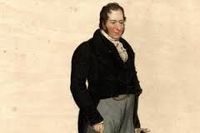Annotation:Ash Grove (The)
Back to Ash Grove (The)
ASH GROVE (Llwyn On/Onn). AKA - "Ashtree Grove"?? AKA and see "Llewellyn," "Sir Watkin William Wynn." Welsh (originally), Scottish, New England; Air and Waltz (3/4 time). C Major (Laufman): F Major (Jones): G Major (Bingley, Johnson). Standard tuning (fiddle). AB (Kerr): AAB (Bingley, Johnson, Jones, Laufman). The air is considered by some to be an early 18th century melody from Wales, perhaps because it is attributed to that country in Gow's Strathspey Reels (book 4, p. 24), where it appears as "Sir Watkin William Wynn," the name of several generations of Welsh baronets. The title refers to either Sir Watkin Williams-Wynn [1] (1749-1789), who was the wealthiest Welshman individual in Wales, with extensive estates in the north of the country. He spent much of his fortune on buildings, on gardens and on collecting art. He loved music and the theatre, but he had a particular passion for the visual arts. His son, also Sir Watkin Williams-Wynn [2] (1772-1840), 5th Baronet, was a Welsh politician.


The earliest Welsh printing was not until Edward Jones's Bardic Museum (1802) as "Llwynn-onn", where it is given that it was named after 'Mr. Jones's mansion near Wrexham'. Robin Huw Bowen says it is played in the form 'theme and variations', a form popular with Welsh harpists of the early 18th century. It appears under different guises in period publications and can be found in Gay's Beggar's Opera (1729) and in the repertoire of Irish harper Turlough O'Carolan (1670-1738), who sometimes is erroneously credited with the composition (by Francis O'Neill, for one). "The Ash Grove" was used as a vehicle for English morris dancing, and various words were set to it, bawdy and otherwise. One set begins:
Down yonder green valley, where streamlets meander
Where twilight is fading, I pensively rove--
Or at the bright noontide, in solitude wander
Amid the dark shade of the lonely ash tree.
See also Annotation:Cease Your Funning (1) for more on variants of the Welsh air.
Source for notated version:
Printed sources: Bingley (North Wales...delineated from two excursions, vol. 2), 1804; p. 7. Johnson (The Kitchen Musician's Occasional: Waltz, Air and Misc.), No. 1, 1991; p. 1. Jones (The Bardic Museum), 1810 edition; p. 83. Kerr (Merry Melodies, vol. 3); No. 309, p. 33. Laufman (Okay, Let's Try a Contra, Men on the Right, Ladies on the Left, Up and Down the Hall), 1973; p. 23. Matthiesen (Waltz Book I), 1992; p. 13.
Recorded sources: Flying Fish FF70610, Robin Huw Bowen - "Telyn Berseiniol Fy Ngwlad/The Sweet Harp of My Land" (1996). Green Mountain Volunteers - "New England Country Dance Music."
